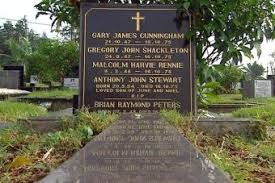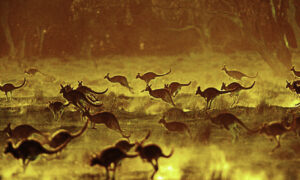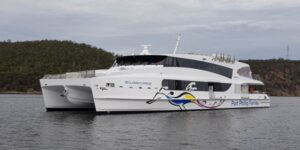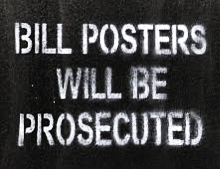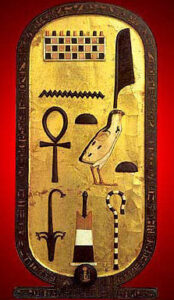Shirley Shackleton is one of those inconvenient people whom governments just wish would go away – in her case she is a reminder of a government without compassion complicit to murder if not genocide. At the Balibo Fort Hotel, there were two books for sale – hers written a decade ago – and a volume of Xanana Gusmao’s speeches.
There were three copies of the Shackleton book – “The Circle of Silence”. One at the top had been multiply caressed. So we bought the one on the bottom, which seemed the least ravaged – the cost was immaterial. It was Balibo.
Shirley Shackleton will be 90 next year and unless there is somebody to take up her crusade, when inevitably she shuffles off the mortal coil, her inconvenient noise will cease. There is a son, a lawyer, a magistrate living in Perth. Maybe he will take up the crusade.
However as the personalities fade, it does not dim the enormity of what we have done as a nation to the Timorese – turned our collective head away. Yes, there have been other journalists, notably Peter Greste, imprisoned by authoritarian regimes, but he survives and to the best of my knowledge the Australian government was not complicit in his imprisonment.
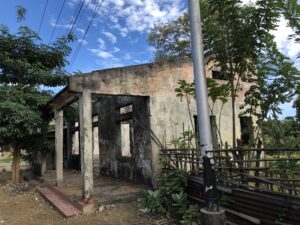
There is still the case of the bugging of the Timor-Leste government and this ongoing Orwellian campaign to eliminate whistle-blowers with the Press caught like the Balibo 5 in the cross-hairs of governmental suppression.
When I was President of the Students Representative Council at the University of Melbourne, ASIO came calling – that friendly invitation to come and join the party. I never crossed that threshold. It is another story. But I am sure I was not on my Pat then … and recruitment patterns now?
The only thing I can say is that presumably the same personality types are still being recruited as in my day, but now with many more toys; truly terrifying. As for me, I never looked good in a gabardine raincoat.

Anti-Vaxer – Prosecute for Genocide
When I was born, it was dangerous to be a child. There were few defences against the ravages of infectious diseases. There was no penicillin. The only immunisation apart from small pox available as a young child was against diphtheria. Nobody in the wilds of anti-vaxer propaganda would ever had heard of or seen diphtheria – a paediatrician friend of mine has seen it once – it was a huge killer of children before the introduction of a vaccine. In the decade up to 1935, over 4,000 children died of the disease; mass immunisation had commenced in 1932. Between 1996 and 2005 there were no deaths, but three have been recorded since that time.
The vaccine was later combined into triple antigen, targeting whooping cough and tetanus as well.
I am an age as are my sons that we all had measles, chickenpox and mumps as children – and we were all very sick. However it was the late Gay Davidson, whose younger daughter developed a rare late complication of measles infection who brought into public view the importance of the vaccination against measles in particular. The brain goes to mush, and the beautiful vivacious child becomes a vegetable over time before dying – a horrible death. Gay Davidson was an important face in advocating immunisation against measles and in the late 1990s the immunisation rates rose in Australia, the Australian government then being a very strong proponent.
Finally, there was poliomyelitis. There was no vaccine when I was a child. I went through an epidemic when contact between schools was banned. Ice cream was banned. Children died and those who survived the disease were added to the wards of crippled children in every city of Australia; children in iron lungs; children with heavy calipers; children with all stages of disability. I was immunised first with Salk and then given Sabin. Poliomyelitis had nearly been eliminated before the antivax barbarians in their various guises have come calling.
The problem is that the community’s level of immunisation is a measure of civilisation. As the antivaxers – the health barbarians with their poisonous message – raise the level of uncertainty in the community, so will go civilisation as we know it. It is paradoxical that in a world where the diversity of safe vaccines is expanding, in so many places the level of immunisation is falling because of the uncertainty promoted by antivaxers.
I have detailed five diseases where the burden of disease has fallen dramatically because of immunisation. There were many other diseases that have yielded to vaccines. Some I faced growing up. As medical students we vaccinated one another against smallpox. This disease has been eliminated from the face of the earth. When I first went overseas, together with my passport I also had a yellow booklet showing that I had been vaccinated against smallpox and immunised against typhoid, cholera and later yellow fever.
This country has had a brilliant immunisation program since the 1990s and much of the early success of this program can be attributed to Michael Wooldridge, the then Minister for Health, as well as the indomitable Gay Davidson. Nobody has written her story. However, the program and the strategy is clearly and crisply stated up to 2024.
Yet I cannot remember it mentioned once in the recent election campaign as a signature of success.
However, in Australia the government is fixated on keeping our borders intact by keeping a few poor refugees out rather than drawing attention to the ongoing successful national immunisation plan.
The charlatan, former doctor Andrew Wakefield and his girlfriend, Elle MacPherson from their lodging in Austin Texas are demonstrating how destructive systematic antivax propaganda can be. If a government becomes timid in the face of community agitation as it has done on fluoridation, then this country should watch out, especially if these antivaxers start infiltrating the political grass roots.
I have lived in this other universe when there are few antivaxers –yes it was a universe where there was an antivax element who believed if you were vaccinated with cow pox you would grow horns, but why were there so few antivaxers? Vaccines apart from smallpox were new. Since there were no evidence-based preventative measures, the populace just accepted that it was God’s will that children should die a myriad of deaths from these diseases.
Today, in that universe antivaxers would be in their element, no vaccines – just watching children die. But of course according to the antivaxers, saving the children from autism. Today it would be what I would say is not God’s will but Genocide.
To Cook a Roo – Part 111
Charlie diversifies
Pintubi are practical. They cooked all creatures in their skin. The fat content of Australian native animals is too low for cooking on a spit. That would create a hard dry gristle and there were neither cooking containers to stew meat, nor any salt available. Furthermore getting about near naked makes retaining animal hides unnecessary.
As no salt or other flavouring was used in traditional Pintubi cooking, this was literally life lived in the raw in what they laughingly if not longingly called “before trouser time”.
Cooking in the skin must happen right away and before the blood congeals so no road kill gone stiff! Not once in six years eating the cooked-in-skin earth oven food did I crunch on any stones!
The niftiest cooking trick I saw was that used for the delicious rumiya (sand goanna) a white meat that tastes much like chicken. Averaging about 40cm long they are abundant and easiest to catch in spring when they start new burrows in the sandy earth. They live mainly on ants and insects having neither the ghastly infectious bite of the large carrion eating goannas nor a gamey smell. By pushing the hind legs hard into the abdomen the contents of the sand goanna’s gut are forcefully excreted so they don’t need to be cut open. To cook, the skin is scorched to remove the outer layer, which would otherwise ruin the flavour, before it is placed under the ashes for about 10 minutes. The meat is mostly in the tail and there’s some fat attached to the skin and at the loins. The 10ml steel bore pump rod I always had was sought after by the goanna hunters who used it to probe sand goanna tunnels so that you follow the hole by probing from the surface instead of laboriously digging deep along a tunnel that can be seven metres long.
Plant “tucker” was far less plentiful but some was so excellent that it could not be improved by any flavourings. In the spring, the pungana bean, which was shown to me, was my favourite. Growing like giant acacia pods on a three meter high shrub and similar in appearance to snake beans, the long pods are cooked in a minute on a burning clump of grass, the green soya sized beans with a flick of bright yellow tastes like corn.
Rumiya and plains bustard (about a turkey sized bird) were tasty cooked in the earth fire pit and much better than food from my tucker box a few weeks after the last trip to town. I only ate feral cat once, cooked by Minyina and the horrific look of that fore half of scorched cat passed to me dripping juices with the charred skin peeled back over canine teeth was unappetising. However, I was hungry enough and it all stayed down which is more than I can say for the last time I had ample helpings of kangaroo in 1984, three years on from the cooking lesson at Tjiterong. (To be continued)
Mouse Whisper
To cap off this blog of culinary delights, I was talking to this Pangolin at the international arrivals at the Wood’s Point airport who told me that one is permitted to bring a kilogram of civet coffee back into Australia without having to declare it. Apparently it makes the best “Catpoo-cino” and yes, that’s what they call it!

